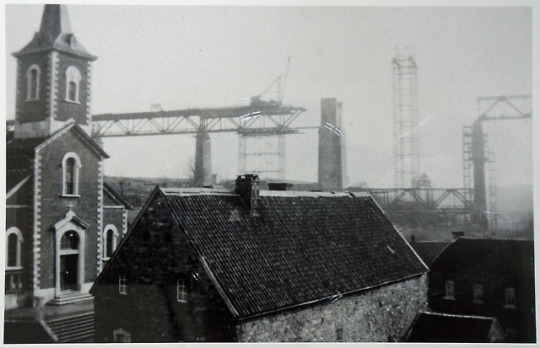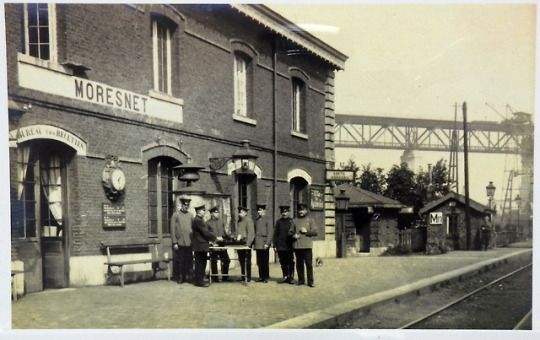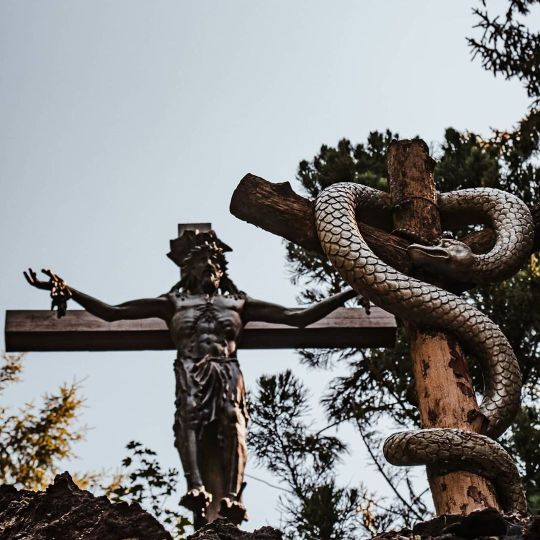#moresnet
Text
Esperanto: The Artificial Language That Aimed To Unite Humanity
Esperanto was intended to be an easy-to-learn second language that enabled you to speak with anyone on the planet.
— February 27, 2024 | By Scotty Hendricks

Credit: Oleksii/Adobe Stock
Key Takeaways:
Esperanto is a constructed language designed to be easy to learn and use.
It was created by a Polish Ophthalmologist who dreamed of uniting the world, and his hometown.
While it has yet to reach universal adoption, it has enjoyed widespread use and official recognition at times.
The idea of a universal language dates back nearly as far as written language. The story of The Tower of Babel is predated by a 21st-century BCE Sumerian story called Enmerkar and the Lord of Aratta, which has similar themes. There are stories of Hermes and Brahma being behind the multitude of languages in their respective religions. Each of these stories implies that humanity spoke a single language once upon a time. And some suggest we could again.
Philosophers have spoken about the idea of a universal language. Leibniz and Descartes dreamed of a constructed language that would better express philosophical ideas. Nietzsche believed a universal language was an inevitability.
While many languages can claim to be or to have been a lingua franca over different geographical areas, none have been the “world language” that philosophers dreamed about. Most of the contenders have been existing languages. However, one of the more interesting attempts at a common tongue for the world, Esperanto, was invented specifically for that purpose.
Lingvo de la Mondo
Dr. L.L. Zamenhof, a Polish Ophthalmologist, first Created Esperanto. Born and Raised in a Multi-Ethnic Area of then Russian-Controlled Poland, Dr. Zamenhof was acutely aware of the problems caused by a lack of linguistic understanding and the barriers that it causes. He firmly believed that the distrust and violence that existed between the communities were both caused and exacerbated by a failure to communicate.
In 1887, with the aid of his wife, Dr. Zamenhof published his first Esperanto textbook, introducing his language to the world. Aiming to avoid celebrity, he signed it with the Pseudonym Doktoro Esperanto, which translates to “Dr. Hopeful.” Enthusiasts quickly decided that this was a great name. Clubs dedicated to learning other constructed languages, such as Volapük, shifted over to learning Esperanto.
Dr. Zamenhof dreamed that Esperanto would become the world’s go-to international auxiliary language. If everyone learned it as their second tongue, everyone could speak to everyone. Even better, this language, while clearly Indo-European in nature, didn’t belong to any one nation and could be learned without bringing in certain nationalist or colonialist baggage. It also doesn’t provide any undue advantages to people from one country since everyone would learn it as a second tongue.
His motivations were both practical and idealistic as he hoped to both minimize the “time and labor we spend in learning foreign tongues,” and believed that: “Were there but an international language, all translations would be made into it alone … and all nations would be united in a common brotherhood.” He was also clear in his hopes that the language would see wide day-to-day use outside of international communications.
For a while, it seemed like the language might live up to the dreams of its founder. Clubs dedicated to learning and teaching the language multiped around the world. Some areas saw a very high concentration of learners. In some parts of Europe, as many as one in eight people were reported to know Esperanto. Other estimates put those numbers lower, however. Global conventions for Esperantists began in 1905 and proved successful.
In 1908, Esperantists living in Neutral Moresnet advocated for the disputed area to be organized as the state of Amikejo, which translates to “Friendship.” While sources disagree, the organizers may have gone so far as to declare the formation of Amikejo as the first official Esperanto-speaking country. This went unrecognized, and the territory would later become part of Belgium. Other countries, such as the Republic of China, began teaching the language in schools around this time.
The progress of the language slowed during World War One. Dr. Zamenhof died of heart failure before it was over. However, the Universal Esperanto Association did stick to its idealist roots and facilitated civilian communication between warring nations by transferring letters through its headquarters in Switzerland.
Esperanto was likely closest to wide adoption in the 1920s. Many early short-wave radio stations broadcast in it, hoping to catch the ears of a world of listeners. Many countries encouraged the language, with the USSR being particularly enthusiastic about it for a time. The League of Nations, at the request of several delegations, considered a proposal that Esperanto be used in international relations. The French delegation voted against this.
However, as in many other areas world, the dizzying heights of the 1920s were followed by the rather depressing 1930s. As nationalism ramped up, those speaking an international language became targets. The Nazis denounced the language as a tool of the imagined vast international Jewish conspiracy against Germany, banned Esperanto organizations, and arrested their leaders. After the invasion of Poland, members of Dr. Zamenhof’s family were sent to concentration camps. The progress of the language was also reversed in the USSR, where more than a few of its speakers were arrested on flimsy charges, and accused of being part of an “international espionage organization.” World War II proved disastrous for a linguistic community dedicated to world peace.
The Cold War put a further damper on things, though UNESCO did grant the Universal Esperanto Association a consultative relationship and has reported favorably on the language in the past. Today, the language is still spoken by many. While it is difficult to estimate how many people speak Esperanto, Director Vilĉjo Harris of the Central Office of Esperanto-USA suggests that “the number of people who use Esperanto is as difficult to estimate as the number of people who play chess.” Existing estimates range from 100,000 to as many as 2 million. Duolingo, which offers courses in the language, shows 384,000 learners on the language selection page. Some sources suggest the number of people who studied the language at some point could be much higher.
Esperanto isn’t, and has never been, the domain of random enthusiasts, either. Famous users of the language include author Leo Tolstoy, Yugoslavian head of state Josip Borz Tito, author and professor J.R.R. Tolkien, Austrian President Franz Jonas, philosopher Rudolf Carnap, financier George Soros, and Pope John Paul II.
La Reguloj
As mentioned above, Esperanto was designed for simplicity and wide adoption. It is clearly Romanic in character. Even somebody with a casual understanding of languages will catch obvious traces of Spanish, French, and Italian, though some of it is closer to German, English, or Greek.
It is an extremely regular language. Its phonics are consistent. Its 16 grammatical rules have no exceptions. There are no irregular verbs. Word classes end in the same letter. For example, singular nouns all end with the letter “o.” New words can be easily created from old ones, so only a limited number of root words must be memorized before a person can communicate. The stress is always placed on the second to last syllable, so there is no guessing when speaking.
Between the straightforwardness of the language and its close relationship to the Romance, Germanic, and Eastern European languages, supporters of Esperanto have long argued that it can be learned quickly, perhaps in as little as a third of the time of other languages. However, Leo Tolstoy’s claims that he learned it in four hours remain unsubstantiated. Despite the advantages that speakers of European languages have in learning it, it has proven popular all over the world.
New words continue to be added to the language as needed. These changes are overseen by the Akademio de Esperanto. This group of experts keeps the language in line with the existing rules.
Aplikoj
The question that comes up the most with Esperanto is what use it might have. After all, a language is a means of communication. If there is nothing to communicate using it, then it doesn’t have much use. The number of speakers being lower than anticipated has also plagued the language from the start. Dr. Zamenhof himself tried to get people to agree to learn the language if 10 million other people made the same pledge. However, he got a mere 1,000 responses.
However, unlike many other constructed languages, Esperanto has a culture. Many books, poems, and even (reportedly terrible) films exist in the language. Despite the current lack of an Esperanto-speaking country, the community of speakers is robust. Groups dedicated to the language exist on every continent, including Antarctica. Annual global conventions dedicated to the language continue to meet. It is still possible to get a college degree in understanding the language in colleges in China, Poland, and The Netherlands.
Director Harris of Esperanto USA told Big Think that the language has made many friendships possible for him:
“I made quite a few friends of people who do not speak English well, but speak some Esperanto. These people live in various countries, and we try to understand how to get past cultural differences. As a result of these friendships, I feel like I am a world citizen.”
Some studies also suggest that it is a useful tool for learning a third language. The Paderborn method of language learning calls for students to be taught an easy foreign language in schools so they can then learn a third language more quickly. Some versions of this use Esperanto as the easy language. In one study, students who learned Esperanto for two years before learning English caught up to their peers who learned only English fairly quickly and soon surpassed them despite spending less time on it overall. This effect also exists with other languages, though some studies and authors suggest Esperanto offers certain advantages.
While the early dreams of world peace and understanding through a single auxiliary language belonging to no nation may strike many as naive today, the Esperanto movement is still strong. Even if it hasn’t managed to unite the world in a common tongue, it continues to connect people. At the end of the day, wasn’t that part of the dream?
#Esperanto#Artificial Language#Easy to Learn | Second Language | To Unite Humanity#Creator | Polish Opthalmologist#Dr. L.L. Zamenhof#Born | Raised | Russian Controlled Poland 🇵🇱#Doktoro Esperanto | Dr. Hopeful#Communication | History
2 notes
·
View notes
Note
So I've already made a post about my headcanons on ghost formation. The one of interest for Wulf is about issues that can arise in formation when multiple people or living things die at the same time, the same place, and in the same manner.
This causes the ghosts of all those beings to form around the same spot, and if the imprints of post-living consciousnesses are too similar to each other to parse out, they will merge forming a ghost that had 2 or more living counterparts. Sometimes multiple ghosts will form, but there will be less ghosts then beings who died. This is more likely if the living beings had similar thought patterns upon death and very similar life experiences.
While cross-species merging is very rare, it can happen if there's a lot of members of one species and they overpower the imprint of the other species.
Animals with very big and complex brains like humans tend to resist merging and retain more of themselves in cross-species merging with animals that have smaller brains.
So, assuming that Wulf doesn't choose to look like a wolf because he's a furry, he may be the ghost of some guy plus the ghost of that guy's many dogs. Maybe he was a dog breeder, owned a pet store, or just had a lot of dogs.
In order to result in Wulf, the man and his dogs would all need to die at the same time in the same way.
He may have a dog sledder, so hypothermia or getting lost were a risk, but since he doesn't have an ice core that's probably not how he died.
Neutral Moresnet was a territory between Belgium and Germany that in 1908 made Esperanto one of it's official languages. It was annexed by Germany in WWI, given to Belgium and renamed Kelmis, then annexed again in WWII, then given back to Belgium. In WWI the territory was mostly untouched during the annexation, so if Wulf is from there and died during an invasion, WWII is the best option.
He may have died trying to flee soldiers with his dogs and puppies.
Makes sense. Especially with Wulf having animal instincts
Tbh I think his form also relates to his death. I feel like he was killed being mauled by wolves while trying to run.
There's been many theories of him being scientist, being a werewolf, experiment, one that even tried to unlock ghost portals as well helping people escape and giving aid to people. I feel like he was on the run, when alive
39 notes
·
View notes
Text
Paris peace treaties
Wilson's 14 points:
1. abolition of secret diplomacy
2. free navigation at sea for all nations in war and peace
3. removal of economic barriers between states
4. all-round reduction in armaments
5. impartial adjustment of colonial claims in the interests of the populations concerned
6. evacuation of Russian territory
7. restoration of Belgium
8. liberation of France and restoration of Alsace and Lorraine
9. readjustment of Italian frontiers along the lines of nationality
10. self-government for the people of Austria-Hungary
11. Romania, Serbia, and Montenegro to be evacuated and Serbia given access to the sea
12. self-government for the non-Turkish peoples of the Turkish Empire and permanent opening of the Dardanelles.
13. an independent Poland with secure access to the sea
14. a general association of nations to preserve peace
The aims:
FRANCE - Clemenceau
Wanted a HARSH peace that would ruin Germany both economically and militarily so that it could never again threaten French borders.
BRITAIN - Lloyd George
In favour of a less severe settlement that would enable a quick German recovery so that trade could resume. However, Lloyd George had just won an election with slogans such as 'Hang the Kaiser', so the British public expected a harsher settlement.
THE USA - Woodrow Wilson (Jesus-complexed)
In favour of a lenient peace, though he was very disappointed that the Germans had ignored the 14 points when imposing the Treaty of Bretsk-Litovck. He had to accept British and French demands for reparations and German disarmament, but was able to limit the reparations to losses to civilians and their property, instead of 'the whole cost of the war'. He was also in favor of self-determination wherein a nation should be freed from foreign rule and given democratic governments of their own choice.

The treaties:
VERSAILLES - Germany
Fixed the war guilt solely on Germany and its allies (see short-term causes of wwi)
- 10% of its land was removed and redistributed including:
Alsace-Lorraine to France
West Prussia, Posen and Silesia to Poland
Eupen, Malmedy and Moresnet to Belgium
Northern Schleswig to Denmark
Hultschin to Czechoslovakia
Danzig and the Saarland became mandates of the League of Nations
All colonies were lost.
Reparations were set at 132 billion gold marks/£6,600 million.
The army was reduced to 100,000 men
No air force, no tanks, no artillery
12 torpedo boats and no submarines
Rhineland became a demilitarised zone (to increase the security of France, Belgium, and the Netherlands against future German aggression.
Forbidden to unite with Austria

THE GERMAN RESPONSEThey objected on the grounds that they were not allowed into the discussions at Versailles as they were instead presented with the terms and told to sign. Not signing would continue the war. Complaints were heard and promptly ignored.
Perspective: Germans were justified in objecting and it would have been reasonable to let them join the discussion, and would have deprived the argument used by Hitler that the treaty was a 'diktat' and therefore should not be morally binding.
Counterperspective: Germans shouldn't have expected any better treatment after the harsh way they treated the Russians in the Treaty of Bretsk-Litovsk.
The Germans complained that they had been promised terms based on Wilson's 14 points and that many of the provisions were not based on them at all - a swindle. Not very valid as the 14 points had never been accepted as official by any of the states involved.
Germany had ignored them when they still had a chance of victory in January 1918 and since then, Allied attitude towards Germany had hardened (Bretsk-Litovsk, the destruction of mines, factories and public buildings during their retreat through France and Belgium) and led to the addition of two points: Germany should pay for the damage to civilian populations and property, and should be disarmed - all of which they were aware when accepting the armistice. Most terms actually complied....
Germany also complained about the loss of territory in Europe, specifically Upper Silesia, which they ultimately were allowed to keep 2/3 of. They also complained about their colonies that were made into mandates under Britain and France - annexing without admitting they were annexing...
The Germans complained that 100,000 troops were insufficient to keep law and order at a time of civil unrest. As none of the other powers intended to disarm later (despite 'all-round reduction of armaments' being specified in the 14 points), the Germans became further aggrieved.
The Germans objected to being saddled with the entire blame for the outbreak of war. Reached the conclusion in 6 weeks. The Allies wanted the Germans to admit responsibility so that they would be liable to pay reparations.

The final humiliation: the reparations. Many historians now agree that the amount was too high at £6,600 million/132 billion gold marks.
John Meynard Keynes (present as economic adviser to the British delegation) urged the Allies to take £2,000 million, a more reasonable amount that Germany would be able to afford.
The Germans protested that it was impossible to pay, and soon began to default on their annual instalments, causing resentment among the Allies who relied on German cash to help pay their war debts to the USA. Eventually, the Allies realised their mistake and reduced the amount to £2,000 million in The Young plan in 1929, but at this point the reparations had disastrous consequences economically and politically. BUT it could have been worse if Clemenseau had had his way and made the Rhineland an independent state and annexing the Saar.
No one in Germany was happy about the terms but the Allies threatened the Germans with military invasion to get them to sign the treaty. After four years of war and sacrifive, German citizens felt humiliated to accept blame for the war and territorial loss.
Gerhard Weinberg: The 'justice' of the Treaty of Versailles as a source of European discord is irrelevant. The vast majority of Germans in the interwar period believed that their country had actually won wwi, decisively defeating the USA, but that the Reich was defeated by the 'stab-in-the-back' that was the November revolution of 1918 at the moment of victory. Favourable terms would still be challenged. The harshness of the terms have been exaggerated as Germany lost even more to Poland after wwii: Oder-Neisse... (I feel like maybe the partition of Germany had something to do with that though....)

ST. GERMAIN - Austria
Lost land including:
Bohemia and Moravia to Czechoslovakia
Bosnia-Herzegovina and Croatia to Yugoslavia
Bukovina to Romania
Galicia to Poland
The Tyrol, Trieste, Istria to Italy (As promised in the Treaty of London)
Before a reparations figure was set, Austria went bankrupt...
Army reduced to 30,000 men
No air force
No navy
THE AUSTRIAN RESPONSE
Austrian officials protested the violation of the principle of self-determination, the placement of so many ethnic Germans under Czechoslovak and Italian rule, and the forbiddance of unity with Germany.

TRIANON - Hungary
Lost over two-thirds of its territory and 64% of its pre-war population including:
Transylvania to Romania
Slovakia, Ruthenia to Czechoslovakia
Slovenia and Croatia to Yugoslavia
Reparations set at 200 million gold crowns (payment suspended due to Hungary's financial difficulties)
Army reduced to 35,000 men
No air force, no tanks, no submarines.
THE HUNGARIAN RESPONSE
Hungarian officials(, like the Austrians,) opposed the displacement of so many ethnic Magyars, especially without plebiscites, in violation of the principle of self-determination. They also opposed the Treaty's violation of Hungary's historical character.
NEUILLY - Bulgaria
Various lands lost to Greece, Romania and Yugoslavia (thereby losing access to the Mediterranean sea)
Reparations set at £100 million (75% of which were later remitted)
Army reduced to 20,000 men
No air force
Navy reduced to four torpedo boats, six motor boats and no submarines
THE BULGARIAN RESPONSE
The Bulgarian people were outraged when they learned of the terms of the Treaty but were not in a position to do anything about it. When wwii broke out, Bulgaria sided with Nazi Germany and reclaimed all the lost land - bitterness it seems.
SEVRES - breaks up the Ottoman empire - Turkey
Lost land including:
South-western Anatolia to Italy
Western Anatolia to create Kurdish and Armenian states
Smyrna and Eatern Thrace to Greece
Middle Eastern possessions became mandates under the control of Britain and France.
Reparations=none
Army reduced to 50,000 men
No air force, tanks or submarines
THE TURKISH RESPONSE
Ataturk (father of Turks) rejected the treaty and forced the Europeans back to the negotiating table and was thus able to secure more favourable terms in The Treaty of Lausanne
LAUSANNE - Turkey
Recognised the Republic of Turkey as the successor state of the Ottoman Empire. The Allies dropped their demands of autonomy for Turkish Kurdistand and Turkish cession of territory to Armenia, abandoned cliams to spheres of influence in Turkey, and imposed no controls over Turkey's finances or armed forces. The Turkish straits between the Aegean Sea and the Black Sea were declared open to all shipping.
2 notes
·
View notes
Text
0 notes
Text
0 notes
Text
We all know that the White King's Knight is genderfluid and by all accounts great company, but what about the life details of the other pieces?
The Black Queen's Bishop, for instance, claims to have lost faith years ago, (but actually never really had it and was pressured into the clergy by his family) and is an atheist. He kept the hat and title though because he likes how they look.
In contrast, the White Queen's Bishop is not a bishop at all, but instead prefers to be called an archer or a runner, as the bishop is called in some other languages, being a piece with the most names across cultures. They stole the bishop hat from the previous WQB after punching him in the face for being, quote: "just the worst, the absolute worst." They also speak fluent Esperanto and have an obsession with Neutral Moresnet. They can talk about either for hours.
The White King's Rook hosts a D&D game every other week when schedules permit, which is attended regularly by the White Queen's Knight, both G-pawns, and the Black Queen's Bishop, with the White A-pawn occasionally dropping in. The Black G-pawn brings donuts.
(Chess D&D obviously features full stat blocks for fairy chess pieces. The WQK plays a marshal (rook/knight combination) and the BQB plays a Nightrider (moves as a knight in the same direction as many times as you'd like), and they have a sort of rivalry about it.)
The Black H-pawn secretly wants to be underpromoted to a bishop or a knight during a game, just to see it happen to her instead of the black C-pawn under very specific circumstances that nonetheless do come up at least occasionally.
1 note
·
View note
Text
Vakantie in België in juni
Eerst nog een klein verslagje over de vakantie van juni. In juni is onze eerste vakantie in België. We gaan een helft van het hertog Limburgpad lopen. Dat loopt van Limbourg naar Rolduc. Koen komt ons twee dagen opzoeken om Rudo zijn verjaardag mee te vieren. We halen hem op in Heerlen. Als we hem weer afzetten gaan we langs Jos en bezoeken we Heerlen. We gaan in het glaspaleis naar de tentoonstelling van Keith Haring. Die is leuker dan gedacht. De etappes die we wandelen zijn erg leuk al is het wel een gedoe om steeds weer een bus terug te vinden. We wandelen bijvoorbeeld vanuit België bergop naar het drielandenpunt. We ontdekken dat er in België Duits gesproken wordt en dat er vroeger nog een extra landje was bij Moresnet zodat het drielandenpunt een vierlandenpunt was. De eerste paar wandelingen was het erg heet. De eerste kee hadden we niet genoeg te drinken mee omdat we verwachten wel ergens iets te kunnen drinken. Dat viel tegen. We kwamen zelfs een patatkraam tegen die alleen patat en snacks verkocht maar geen drinken. Hoe bizar is dat…
0 notes
Text
Emil dovifat handbuch der publizistik studium
EMIL DOVIFAT HANDBUCH DER PUBLIZISTIK STUDIUM >> DOWNLOAD LINK
vk.cc/c7jKeU
EMIL DOVIFAT HANDBUCH DER PUBLIZISTIK STUDIUM >> READ ONLINE
bit.do/fSmfG
Handbuch der Publizistik. Unter Mitarbeit führender Fachleute herausgegeben von Emil Dovifat aktiv in ihr tätig ist oder sich ihr im Studium widmet. Festschrift. Emsdetten [Lechte] 1951b, S. 1-8 doVifat, eMiL: Die Publizistik an der Friedrich-Wilhelms-Universität. In: Studium Berolinese. Leitfaden zum Studium der Politologie, Psychologie, Publizistik, Soziologie. Dovifat, Emil (Hrsg.): Handbuch der Publizistik. 3 Bde. Berlin 1968/69.Emil Alfons Dovifat (* 27. Dezember 1890 in Neutral-Moresnet; † 8. Oktober 1969 in Berlin (West)) war deutscher Publizistikwissenschaftler und zählt zu den Zum Sommersemester 1911 nahm er ein Studium in München auf, das er im März des nächsten Jahres in Dovifat, Emil (Hrsg.): Handbuch der Publizistik. Werkauswahl · Zeitungswissenschaft, 2 Bde., 1931 · Handbuch der Weltpresse, 1934 · Handbuch der Publizistik, 3 Bde., 1968/69. Handbuch der Publizistik Unter Mitarbeit führender Fachleute Herausgegeben von EMIL DOVIFAT Band 3 PRAKTISCHE PUBLIZISTIK 2. Teil WALTER DE GRUYTER & CO In seinem letzten wissenschaftlichen Werk , im Handbuch der Publizistik , das 1968 erschien , formulierte Dovifat die Frage so : „ Das Studium der
https://nicebocuxa.tumblr.com/post/691594134248636416/pioneer-avh-1400dvd-bedienungsanleitung, https://pikaveconan.tumblr.com/post/691594227075956736/audi-entertainment-mobile-bedienungsanleitung, https://nicebocuxa.tumblr.com/post/691594318985707520/philips-btb7150-benutzerhandbuch, https://lodecotafi.tumblr.com/post/691593997102317568/konica-c224e-handbuch-der, https://sagafetuge.tumblr.com/post/691594198912221184/mgs-5-erste-hilfe-handbuch-fundort.
0 notes
Photo

Moresnet, an short lived, Esperanto speaking community
from /r/vexillology
Top comment: You can read all about them [here](https://en.wikipedia.org/wiki/Neutral\_Moresnet) but in short, this was a small town with its own government that adopted Esperanto as its official language. Sadly it was annexed by Belgium in the Treaty of Versailles
28 notes
·
View notes
Photo

Moresnet. Ruine Schimper et la Geul.
1 note
·
View note
Photo


Neutraal Moresnet tijdens de Eerste Wereldoorlog. Het ministaatje werd in 1815 gevormd om een oplossing te bieden voor het conflict om de zinkmijnen. Zowel Nederland, Duitsland en België claimden het bezit van deze kostbare mijnen. Om verdere escalatie te voorkomen werd het mijngebied tot neutraal gebied verklaard. Het telde toen 200 woningen en 500 inwoners.
Bij de vrede van Versailles werd het landje opgeheven en definitief aan België toegewezen.
Foto’s tonen Kelmis tijdens de Eerste Wereldoorlog (1916)
Neutral Moresnet during the First World War. The mini-state was formed in 1815 to provide a solution to the conflict over the zinc mines. Both the Netherlands, Germany and Belgium claimed ownership of these precious mines. To prevent further escalation, the mine area was declared neutral. It then counted 200 homes and 500 inhabitants.
At the peace of Versailles the country was finally assigned to Belgium.
Pictures show Kelmis during the First World War in 1916
#Neutraal Moresnet#Moresnet#first world war#great britain#great war#The Great War#belgrium#france#germany#14-18#Kelmis
55 notes
·
View notes
Photo

Moresnet @ AMRA by Peter Van Gestel on Flickr.
Via Flickr:
Het viaduct van Moresnet nabouwen met haar lengte van ongeveer 1100m lijkt in HO gekkenwerk. De clubleden van AMRA hebben bewezen dat het kan. De modelspoorbrug was alvast de trekpleister van hun jaarlijkse opendeurdag. Ditmaal werd de 50ste verjaardag van de club gevierd. De Antwerpse zusterverenigingen waren eveneens van de partij in de feestzaal van het fort.
“To exactly recreate the viaduct of Moresnet (with hair length of about 1100 m) in HO seems crazy. The club members of AMRA have proven that it can. The model bridge was the attraction of their annual open house. This time was celebrated the 50th anniversary of the club. The Antwerp sister associations were also in the Banquet Hall of the fort.”
#model train#train layout#train#bridge#scale model#antwerp#1:87#ho#moresnet#viaduc#viaduct#lijn#24#ligne#modelspoor#modelisme#minature#miniatuur#modelbouw#modeltrein#amra#fort#2#wommelgem
3 notes
·
View notes
Photo

Ein Symbol von Macht, Tod und Unheil, Weisheit und ewigem Leben, Vitalität und Lebenskraft und all dies nur in Bezug auf die Schlange 🐍 . . . #snake #religion #symbol #pilgern #ostbelgien #pilgerweg #visualofearth #earthofficial #moresnet #adventurespirit #photooftheday #visualoflife #belgienshooters #freedomthinkers #neverstopexploring #wildernessculture #meettheworld #symbolism #visitbelgium #symbolik #jesus #nature #outdoor #exploretheworld #nikonphotography #nikond5200 #aachen #earth #photography #nikoneurope (hier: Moresnet-Chapelle) https://www.instagram.com/p/CFg9ghrnytD/?igshid=1sma3lf9mg5nb
#snake#religion#symbol#pilgern#ostbelgien#pilgerweg#visualofearth#earthofficial#moresnet#adventurespirit#photooftheday#visualoflife#belgienshooters#freedomthinkers#neverstopexploring#wildernessculture#meettheworld#symbolism#visitbelgium#symbolik#jesus#nature#outdoor#exploretheworld#nikonphotography#nikond5200#aachen#earth#photography#nikoneurope
0 notes

